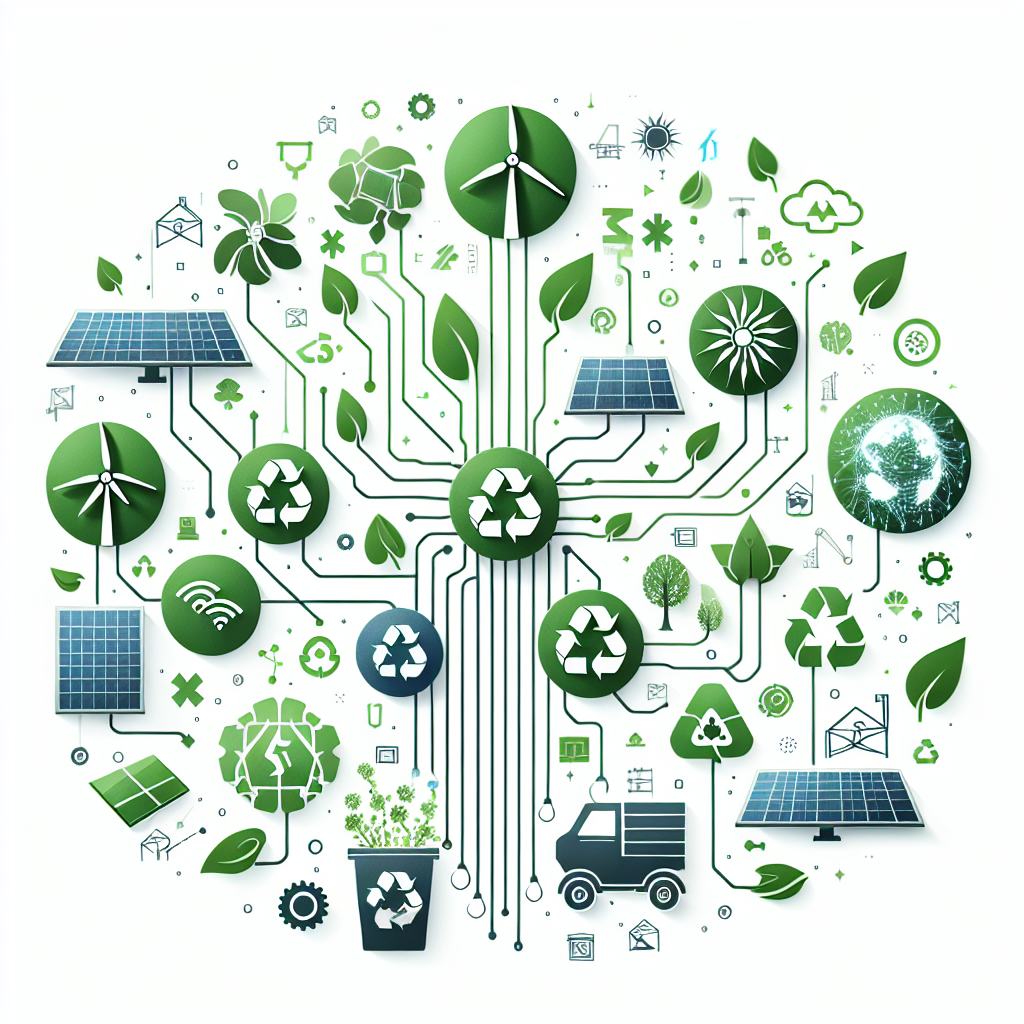Artificial intelligence (AI) has the potential to play a significant role in advancing sustainable development goals across various sectors. From reducing carbon emissions to improving resource management, AI technologies can help address some of the most pressing environmental and social challenges facing the world today. In this article, we will explore the role of AI in sustainable development and how it can contribute to creating a more sustainable future.
AI and Sustainable Development
1. Climate Change Mitigation
One of the biggest challenges facing the world today is climate change, with rising global temperatures causing severe environmental damage. AI can play a key role in mitigating climate change by optimizing energy consumption, improving efficiency in industrial processes, and facilitating the transition to renewable energy sources.
For example, AI-powered smart grids can help utilities better manage and distribute energy, reducing waste and lowering carbon emissions. Machine learning algorithms can also be used to optimize energy usage in buildings, leading to significant energy savings and reduced environmental impact.
2. Natural Resource Management
AI can also be a powerful tool for managing natural resources more sustainably. By analyzing large amounts of data, AI algorithms can help identify areas at risk of deforestation, monitor wildlife populations, and track changes in ecosystems over time.
In agriculture, AI technologies can optimize crop yields, reduce water usage, and minimize the use of pesticides and fertilizers. By providing farmers with real-time data on soil health, weather patterns, and pest outbreaks, AI can help improve productivity while minimizing environmental impact.
3. Waste Management
AI can also play a role in improving waste management practices, reducing the amount of waste generated and increasing recycling rates. By analyzing data on waste generation and disposal patterns, AI algorithms can help identify opportunities for waste reduction and recycling.
Robotic systems powered by AI can also be used to sort and process recyclable materials more efficiently, increasing the recovery rates of valuable resources such as metals, plastics, and paper. This not only reduces the amount of waste sent to landfills but also conserves natural resources and reduces the need for new materials to be extracted.
4. Disaster Response and Resilience
In the face of increasing natural disasters and climate-related events, AI technologies can help improve disaster response and resilience efforts. By analyzing satellite imagery, weather data, and social media feeds, AI algorithms can quickly assess the extent of damage and prioritize response efforts.
AI-powered drones can also be used to survey disaster-affected areas, deliver aid to remote locations, and assess infrastructure damage. By providing real-time data and analysis, AI can help emergency responders make faster and more informed decisions, saving lives and reducing the impact of disasters on communities.
5. Social Impact
AI technologies can also have a positive impact on social development goals, such as improving access to healthcare, education, and financial services for underserved populations. By analyzing large amounts of data, AI algorithms can help identify patterns and trends in health outcomes, educational performance, and financial transactions, leading to more targeted and effective interventions.
For example, AI-powered diagnostic tools can help healthcare providers quickly and accurately diagnose diseases, while AI-powered tutoring systems can personalize learning experiences for students with diverse learning needs. AI can also be used to develop innovative financial products and services that reach marginalized communities and promote financial inclusion.
FAQs:
1. How can AI help address climate change?
AI can help address climate change by optimizing energy consumption, improving efficiency in industrial processes, and facilitating the transition to renewable energy sources. By analyzing data and identifying patterns, AI algorithms can help utilities better manage and distribute energy, reduce waste, and lower carbon emissions.
2. What are some examples of AI applications in sustainable development?
Some examples of AI applications in sustainable development include AI-powered smart grids for energy management, machine learning algorithms for optimizing crop yields in agriculture, and robotic systems for sorting and processing recyclable materials in waste management.
3. How can AI improve disaster response and resilience efforts?
AI can improve disaster response and resilience efforts by analyzing satellite imagery, weather data, and social media feeds to assess the extent of damage and prioritize response efforts. AI-powered drones can also be used to survey disaster-affected areas, deliver aid, and assess infrastructure damage.
4. How can AI promote social development goals?
AI can promote social development goals by analyzing data on health outcomes, educational performance, and financial transactions to identify patterns and trends. AI-powered diagnostic tools can help healthcare providers diagnose diseases, while AI-powered tutoring systems can personalize learning experiences for students.
In conclusion, artificial intelligence has the potential to revolutionize sustainable development efforts across various sectors, from climate change mitigation to disaster response and social impact. By harnessing the power of AI technologies, we can create a more sustainable future for generations to come.

